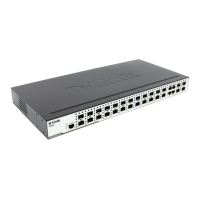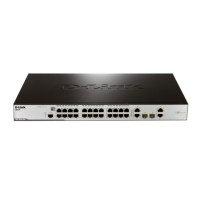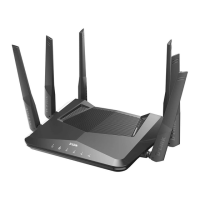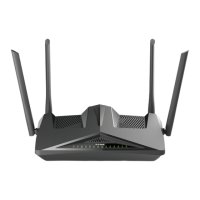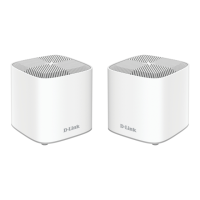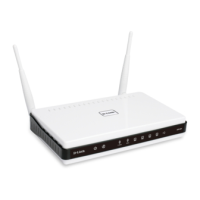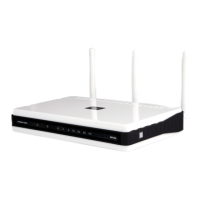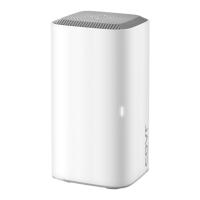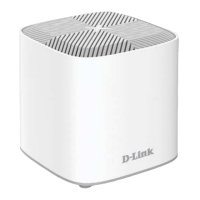xStack
®
DGS-3200 Series Layer 2 Gigabit Ethernet Managed Switch
153
Access Authentication Control
The TACACS / XTACACS / TACACS+ / RADI US commands allow users to secure access to the Switch using the TACAC S /
XTACACS / TACACS+ / RADIUS protocols. When a user logs in to the Switch or tries to access the administrator level privilege,
he or she is prompted for a password. If TACACS / XTACACS / TACACS+ / RADIUS authentication is enabled on the Switch, it
will contact a TACACS / XTACACS / TACACS+ / RADIUS server to verify the user. If the user is verified, he or she is granted
access to the Switch.
There are curren tly three versions of the TACACS security p rotocol, each a separate entity. The Switch's software supports the
following versions of TACACS:
TACACS (Terminal A ccess Controller Access Control System) - Provides password checking and au thentication, and
notification of u ser action s fo r secu rity purposes u tilizing via o ne or m ore cen tralized TACACS serv ers, u tilizing the
UDP protocol for packet transmission.
Extended TA CACS ( XTACACS) - An ex tension of the TACACS protocol with the ability to provide more types of
authentication requests and more typ es of resp onse codes than T ACACS. This protocol al so us es U DP t o t ransmit
packets.
TACACS+ (Terminal Ac cess Controll er A ccess Contr ol System plus ) - Provides detailed access c ontrol for
authentication for n etwork d evices. TAC ACS+ is facilitate d th rough Au thentication co mmands via one or mo re
centralized servers. The T ACACS+ protocol encrypts all traffic betwee n the Switch and the TACACS+ daemon, using
the TCP protocol to ensure reliable delivery
In order for the TACACS / XTACACS / TACACS+ / RADIUS security function to work properly, a TACACS / XTACACS /
TACACS+ / RADIUS server must be co nfigured on a device other than the Switch, called an Authentication Server Host and it
must i nclude usernames and pass words f or aut hentication. When t he user i s p rompted by t he S witch t o e nter usernames and
passwords for authentication, th e Switch con tacts th e TACACS / XTACA CS / TA CACS+ / RADIU S server to ver ify, and the
server will respond with one of three messages:
The server verifies the username and password, and the user is granted normal user privileges on the Switch.
The server will not accept the username and password and the user is denied access to the Switch.
The server doesn't respond to the verification query. At this point, the Switch receives the timeout from the server and then moves
to the next method of verification configured in the method list.
The Switch has four built-in Authentication Server Groups, one for each of t he TACACS, XTACACS, TACACS+ and RADIUS
protocols. These built-in Authentication Server Groups a re used to aut henticate users trying to access the Switch. The users will
set Authentication Server Hosts in a preferable order in the built-in Au thentication Server Groups and wh en a user tries to gain
access to the Switch, the Switch will ask the first Authentication Server Hosts for authentication. If no authentication is made, the
second server host in the list will b e queried, and so on. The built-in Authentication Server Groups can only have hosts that are
running the specified protocol. For example, the TACACS Authentication Server Groups can only have TACACS Authentication
Server Hosts.
The ad ministrator fo r the Switch m ay set up six different au thentication tech niques per user-defined m ethod list (TAC ACS /
XTACACS / TACACS+ / RADIUS / lo cal / n one) for authentication. These techniques will be listed in an order preferable, and
defined by the user for normal user authentication on the Switch, and may contain up to eight authentication techniques. When a
user attempts to access the Switch, t he Switch will select the first tec hnique listed for authentication. If t he first technique goes
through its Auth entication Server Hosts and no au thentication is returned, the Switch will then go to th e next technique listed in
the server group for authentication, until the authentication has been verified or denied, or the list is exhausted.
Please note that users granted access to t he Switch will be grante d normal user pri vileges on the Switch. To gai n access to
administrator level privileges, the user must access the Ena
b
le Admin window and then enter a password, which was previously
configured by the administrator of the Switch.
NOTE: TACACS, XTACACS and TACACS+ are separate entities and are not
compatible. The Switch and the server must be configured exactly the same, using the
same protocol. (For example, if the Switch is set up for TACACS authentication, so
must be the host server.)
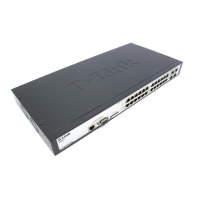
